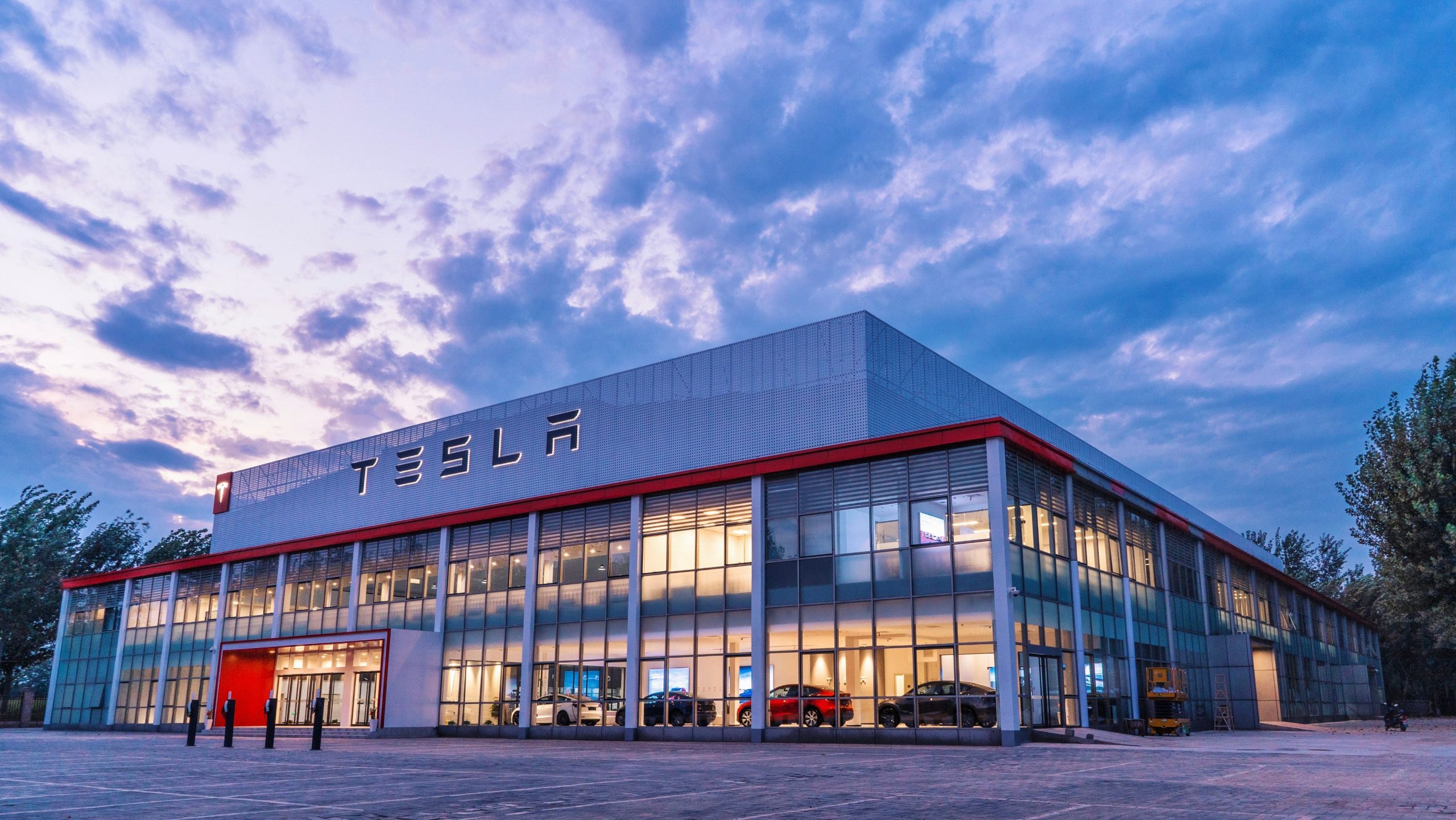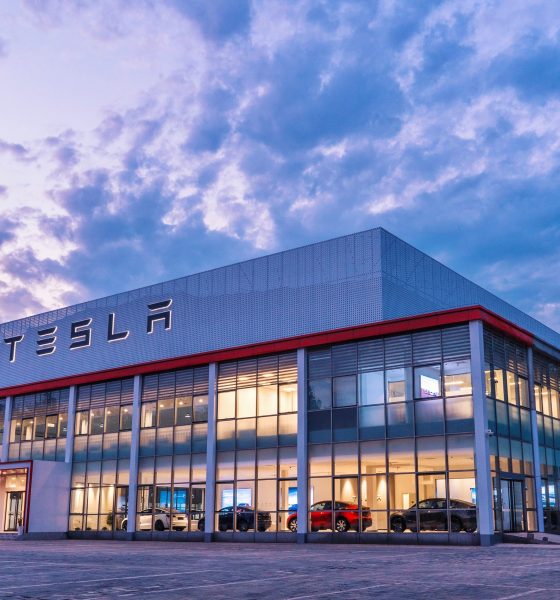

Investor's Corner
Tesla starts accepting investor questions for its Q1 2022 earnings call
Tesla (NASDAQ:TSLA) is expected to hold its Q1 2022 earnings call on April 20, 2022. The event, which would be held at 4:30 p.m. Central Time / 5:30 p.m. Eastern Time, will feature a discussion of the company’s performance in the first quarter, as well as its outlook. Tesla CEO Elon Musk was present in the previous earnings call, but he is yet to announce if he will be attending the upcoming Q1 2022 Q&A session.
The electric vehicle maker will be posting its financial results for the first quarter of 2022 after markets close on Wednesday, April 2022. Despite headwinds in China due to the country’s ongoing Covid outbreak, Tesla seems to have ended the first quarter on a high note. This was hinted at by the company’s vehicle delivery and production results, which revealed that the company manufactured a total of 305,407 vehicles in Q1 while delivering 310,048 worldwide.
In true Tesla tradition, the company is allowing retail and institutional investors to ask questions during the earnings call’s Q&A portion. The questions are compiled by Say, a startup that aims to create and develop investor communication tools. As of writing, only retail investors have placed their inquiries for Tesla, though a good number of them have already been compiled.
The following then are ten of the most notable questions from Tesla’s retail investors for the electric vehicle maker’s Q1 2022 earnings call.
- What is (the) Tesla Construction team busy with these days? Are they planning (an) expansion of existing factories or onto the next set of new Gigafactories? If factories are the product, we would like to see a next factory announcement before the next model.
- Will Berlin and Austin ramp up at a faster rate than Shanghai did – given Tesla is a producing Y, which you have done at scale already at other factories? Can you talk us through some of the major improvements that will make this possible?
- What is the current run rate of 4680 cell production at Fremont and at Giga Texas? What do you expect run rates for 4680 to be in Fremont, Texas, and Berlin at year-end?
- FSD has come a long way. Can Tesla consider launching a geo-fenced fleet in (a) location like Phoenix? While we solve for general autonomy, it would still be great to have at least one location show the world the proof of concept. FSD already performs flawlessly in such locations.
- When can we expect an App Store? What capabilities will you allow developers?
- At (the) Cyber Rodeo, Elon mentioned that a futuristic driverless Robotaxi vehicle is on the roadmap. When can we expect more details on this product offering to be unveiled? Is this something that people can own, or will this only be offered by Tesla as a service?
- What is the current yield of 4680 production at (the) Kato Rd facility & Giga Texas? Tesla had a stockpile of 1 million cells as of January 2022, and it should’ve been already used up for vehicle production. Please share an update on the 4680 ramp.
- Where would the next factory be built?
- Now that Tesla has made such a huge impact on the Texas economy with opening of its factory in Austin, when can we expect to see direct deliveries in the state?
- What customers are you targeting for Tesla Bot?
A look at the questions currently in Say reveals that investors are interested on the company’s key innovations such as its 4680 battery ramp. Future products such as Optimus (Tesla Bot) and a dedicated Robotaxi that Elon Musk teased during the Cyber Rodeo also seem to have caught the interest of TSLA investors. Of course, developments in projects such as Gigafactory Berlin and Gigafactory Texas, both of which were opened recently, are also points of interest.
A full list of Tesla investor questions for the company’s Q1 2022 earnings call could be found here.
Don’t hesitate to contact us with news tips. Just send a message to simon@teslarati.com to give us a heads up.

Investor's Corner
Tesla stock closes at all-time high on heels of Robotaxi progress

Tesla stock (NASDAQ: TSLA) closed at an all-time high on Tuesday, jumping over 3 percent during the day and finishing at $489.88.
The price beats the previous record close, which was $479.86.
Shares have had a crazy year, dipping more than 40 percent from the start of the year. The stock then started to recover once again around late April, when its price started to climb back up from the low $200 level.
This week, Tesla started to climb toward its highest levels ever, as it was revealed on Sunday that the company was testing driverless Robotaxis in Austin. The spike in value pushed the company’s valuation to $1.63 trillion.
Tesla Robotaxi goes driverless as Musk confirms Safety Monitor removal testing
It is the seventh-most valuable company on the market currently, trailing Nvidia, Apple, Alphabet (Google), Microsoft, Amazon, and Meta.
Shares closed up $14.57 today, up over 3 percent.
The stock has gone through a lot this year, as previously mentioned. Shares tumbled in Q1 due to CEO Elon Musk’s involvement with the Department of Government Efficiency (DOGE), which pulled his attention away from his companies and left a major overhang on their valuations.
However, things started to rebound halfway through the year, and as the government started to phase out the $7,500 tax credit, demand spiked as consumers tried to take advantage of it.
Q3 deliveries were the highest in company history, and Tesla responded to the loss of the tax credit with the launch of the Model 3 and Model Y Standard.
Additionally, analysts have announced high expectations this week for the company on Wall Street as Robotaxi continues to be the focus. With autonomy within Tesla’s sights, things are moving in the direction of Robotaxi being a major catalyst for growth on the Street in the coming year.
Elon Musk
Tesla needs to come through on this one Robotaxi metric, analyst says
“We think the key focus from here will be how fast Tesla can scale driverless operations (including if Tesla’s approach to software/hardware allows it to scale significantly faster than competitors, as the company has argued), and on profitability.”

Tesla needs to come through on this one Robotaxi metric, Mark Delaney of Goldman Sachs says.
Tesla is in the process of rolling out its Robotaxi platform to areas outside of Austin and the California Bay Area. It has plans to launch in five additional cities, including Houston, Dallas, Miami, Las Vegas, and Phoenix.
However, the company’s expansion is not what the focus needs to be, according to Delaney. It’s the speed of deployment.
The analyst said:
“We think the key focus from here will be how fast Tesla can scale driverless operations (including if Tesla’s approach to software/hardware allows it to scale significantly faster than competitors, as the company has argued), and on profitability.”
Profitability will come as the Robotaxi fleet expands. Making that money will be dependent on when Tesla can initiate rides in more areas, giving more customers access to the program.
There are some additional things that the company needs to make happen ahead of the major Robotaxi expansion, one of those things is launching driverless rides in Austin, the first city in which it launched the program.
This week, Tesla started testing driverless Robotaxi rides in Austin, as two different Model Y units were spotted with no occupants, a huge step in the company’s plans for the ride-sharing platform.
Tesla Robotaxi goes driverless as Musk confirms Safety Monitor removal testing
CEO Elon Musk has been hoping to remove Safety Monitors from Robotaxis in Austin for several months, first mentioning the plan to have them out by the end of 2025 in September. He confirmed on Sunday that Tesla had officially removed vehicle occupants and started testing truly unsupervised rides.
Although Safety Monitors in Austin have been sitting in the passenger’s seat, they have still had the ability to override things in case of an emergency. After all, the ultimate goal was safety and avoiding any accidents or injuries.
Goldman Sachs reiterated its ‘Neutral’ rating and its $400 price target. Delaney said, “Tesla is making progress with its autonomous technology,” and recent developments make it evident that this is true.
Investor's Corner
Tesla gets bold Robotaxi prediction from Wall Street firm
Last week, Andrew Percoco took over Tesla analysis for Morgan Stanley from Adam Jonas, who covered the stock for years. Percoco seems to be less optimistic and bullish on Tesla shares, while still being fair and balanced in his analysis.

Tesla (NASDAQ: TSLA) received a bold Robotaxi prediction from Morgan Stanley, which anticipates a dramatic increase in the size of the company’s autonomous ride-hailing suite in the coming years.
Last week, Andrew Percoco took over Tesla analysis for Morgan Stanley from Adam Jonas, who covered the stock for years. Percoco seems to be less optimistic and bullish on Tesla shares, while still being fair and balanced in his analysis.
Percoco dug into the Robotaxi fleet and its expansion in the coming years in his latest note, released on Tuesday. The firm expects Tesla to increase the Robotaxi fleet size to 1,000 vehicles in 2026. However, that’s small-scale compared to what they expect from Tesla in a decade.
Tesla expands Robotaxi app access once again, this time on a global scale
By 2035, Morgan Stanley believes there will be one million Robotaxis on the road across multiple cities, a major jump and a considerable fleet size. We assume this means the fleet of vehicles Tesla will operate internally, and not including passenger-owned vehicles that could be added through software updates.
He also listed three specific catalysts that investors should pay attention to, as these will represent the company being on track to achieve its Robotaxi dreams:
- Opening Robotaxi to the public without a Safety Monitor. Timing is unclear, but it appears that Tesla is getting closer by the day.
- Improvement in safety metrics without the Safety Monitor. Tesla’s ability to improve its safety metrics as it scales miles driven without the Safety Monitor is imperative as it looks to scale in new states and cities in 2026.
- Cybercab start of production, targeted for April 2026. Tesla’s Cybercab is a purpose-built vehicle (no steering wheel or pedals, only two seats) that is expected to be produced through its state-of-the-art unboxed manufacturing process, offering further cost reductions and thus accelerating adoption over time.
Robotaxi stands to be one of Tesla’s most significant revenue contributors, especially as the company plans to continue expanding its ride-hailing service across the world in the coming years.
Its current deployment strategy is controlled and conservative to avoid any drastic and potentially program-ruining incidents.
So far, the program, which is active in Austin and the California Bay Area, has been widely successful.








